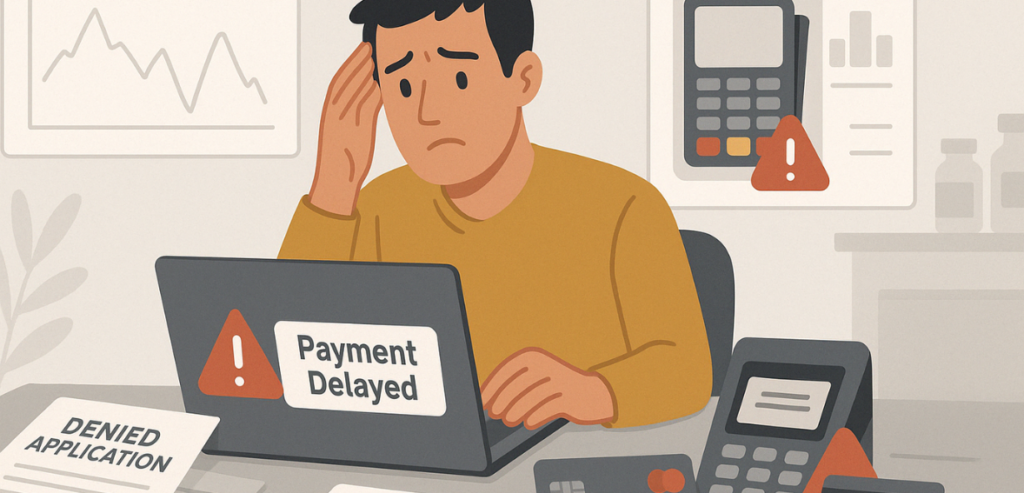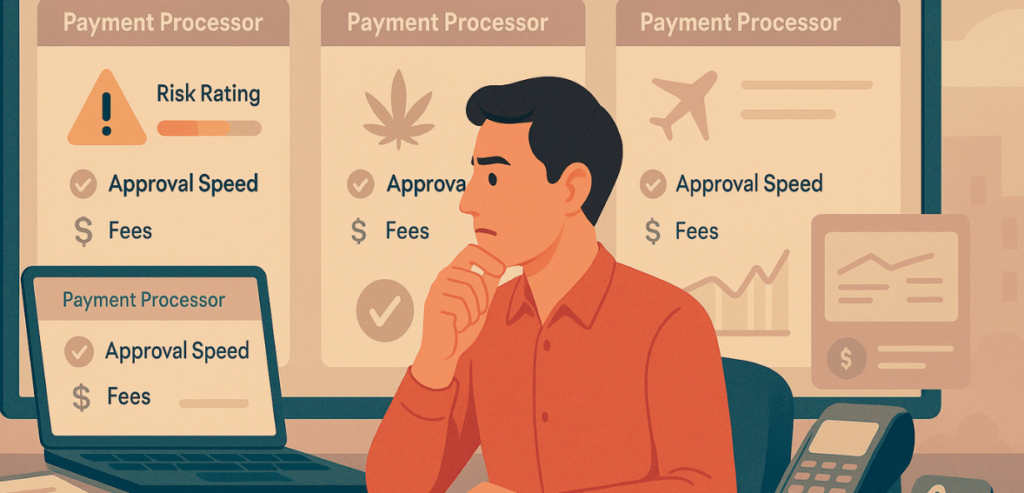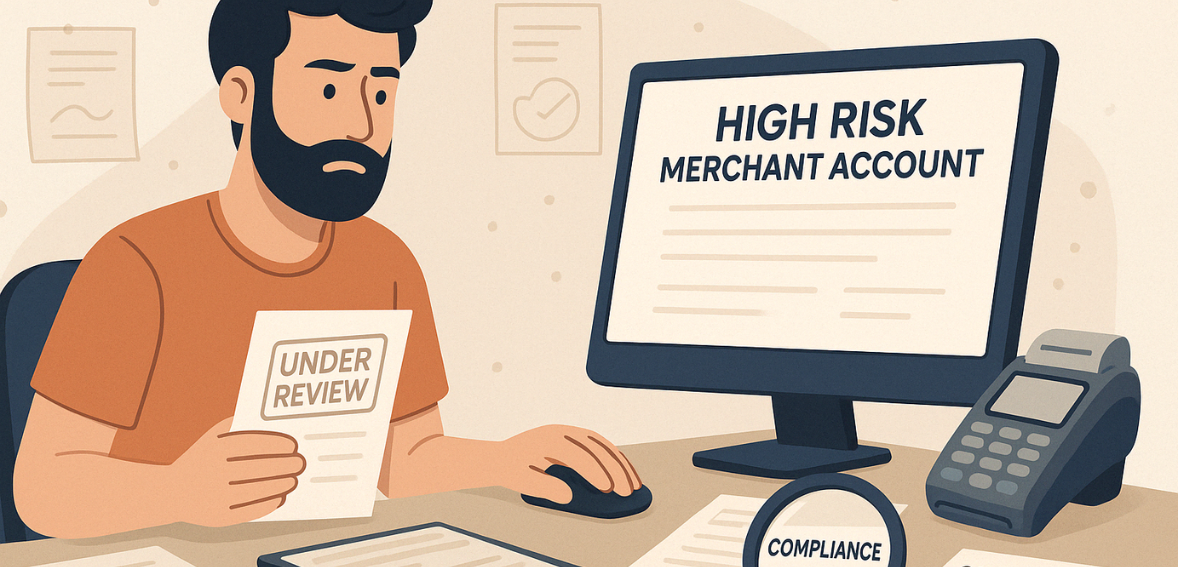Operating in a “high-risk” business category can be both a challenge and a reward. If you’ve ever been turned away by a traditional payment processor or quoted an exorbitant fee, most likely your merchant account was characterized as high risk. But what does that actually mean?
A High Risk Merchant Account is a specialized type of payment processing account designed specifically for businesses that operate in industries which are known for higher levels of chargebacks, fraud, or regulatory scrutiny. From subscription-based services to online gaming and nutraceuticals, many profitable industries fall into this category—even if they operate legally and ethically.
For any business owner venturing into this realm, knowing how High Risk Merchant Accounts operate is essential. These accounts have different rules, fees, and expectations than standard merchant services. The good news? Well-supported knowledge paired with a good provider lets high risk businesses accept payments without being put under constant scrutiny while growing their business.
In this article, we’ll break down what makes a business “high risk,” how these accounts work, and what to look for in a payment processor. Whether you’re launching a new venture or struggling with an existing setup, this guide will help you make smarter, more confident decisions.
What Makes a Business a “High Risk” Business?

The term “high risk” isn’t a reflection of your business character — it’s a description banks and payment processors use to assess how risky it is to process your transactions. And risk, in this instance, is primarily a matter of chargebacks, potential fraud, and financial instability.
High-Risk Industries
Certain industries are inherently high risk due to their business models, customer disagreements, or the legal environment they operate in. Common examples include:
- Adult entertainment
- Online gaming and gambling
- Travel and ticketing services
- CBD and hemp products
- Forex and cryptocurrency
- Nutraceuticals and dietary supplements
- Subscription-based services
- High-ticket coaching or consulting
Even if you do run your company well, the industry itself could be a big red flag for processors.
Factors That Trigger a High Risk Label
- Frequent chargebacks: If your industry tends to have high refund or dispute rates, it’s a red flag.
- Subscription billing: Recurring payments lead to higher cancellation and dispute rates.
- International transactions: Cross-border payments carry greater fraud risk.
- New or unproven businesses: Lack of history makes it harder for processors to predict risk.
- Legal grey areas: Industries like CBD or gambling may be legal in some places but not in others, adding compliance concerns.
High risk does not mean that your business is “bad”—just means that you need a processor that understands your business and can best support you.
High Risk vs. Low Risk Merchant Accounts

Not all merchant accounts are the same. Merchant accounts are classified as high risk or low risk merchants and the distinction is much more than industry categorization—this classification influences your fees, the approval process, and the support you can expect to receive.
Approval Process
- Low Risk Accounts: Often granted quickly with little paperwork. Processors consider them stable, with lower anticipated chargebacks.
- High Risk Accounts: Undergo thorough underwriting. You will be requested to provide further documentation, such as processing history, business model and banking information.
Fee Structures
- Low Risk Merchants: Pay lower rates, usually between 1.5% and 2.5% per transaction.
- Rates for High Risk Merchants: Rates can vary from 3.5% to 6% + monthly fees + rolling reserves.
These increased fees allow processors to account for the potential cost of fraud, disputes, or some type of compliance issue.
Contract Terms
- Low Risk: Month-to-month, and sometimes no early termination fees.
- High Risk: Long-term contracts, rolling reserves (a percentage of your money held back), and penalty clauses.
Common Challenges of High Risk Merchants

Being labeled high risk doesn’t mean you can’t succeed—just that you’ll have some additional hurdles to clear as you go. Here’s what you can expect while working with a High Risk Merchant Account.
Higher Fees
You’ll probably pay slightly more per transaction. Processors charge higher fees—sometimes double what low-risk merchants pay—to protect themselves. You could also incur additional monthly service, gateway access or chargeback management tools fees.
Rolling Reserves
With a rolling reserve, the processor retains a percentage of your funds, typically between 5–10%, for 3–6 months. All this serves as a security buffer against chargebacks or fraud.
Chargebacks and Account Holds
High risk industries see chargebacks. Too many chargebacks can result in warnings, penalties or even frozen accounts. If processors suspect unusual activity, they may temporarily hold your funds.
Harder to Get Approved
Traditional banks (or payment processors like Stripe or PayPal) typically reject high risk applications. You’ll have to work with a specialty processor who understands your business model and has flexible underwriting.
Unpredictable Terminations
Certain providers can close your account with no notice if you violate terms, or have an unexpected surge of disputes. This can completely disrupt your operation—especially when you depend on one payment channel.
Understanding what these challenges are, will allow you to make better preparations, ask better questions, and find a provider that will actually fulfill the needs of your business.
Benefits of High Risk Merchant Accounts

It might be tempting to discuss the negatives, but there are major benefits of having a High Risk Merchant Account — especially when they’re customized for your industry. Such accounts aren’t only about managing risk — they’re about helping with growth.
Access to Payment Processing
Without a high risk merchant account, it would leave many businesses with no access to credit card payments. Even though traditional providers will also simply avoid specific industries, specialized high risk processors equip you with the means to function and grow in a lawful and secure manner.
Global Transactions Support
Many high risk processors have features that allow you to accept payments from international customers. That’s a big one for online businesses, travel services, or coaching programs for international clients.
Chargeback Management Tools
Many high risk providers offer superior fraud detection and chargeback alerts. These tools allow you to respond to disputes quickly, lower chargeback ratios, and remain in compliance with processor rules.
Higher Volume Caps
If you have a high ticket or high volume business, traditional processors may start to cap your monthly processing. High risk accounts usually come with larger caps—or no caps at all—so your revenue isn’t restricted.
Tailored Solutions
High risk processors know your niche, whether you sell CBD or subscription boxes. They often offer customized gateway setups, flexible payout schedules, and dedicated support.
So while the costs might be higher, the value lies in access, customization, and peace of mind.
How to Apply for a High Risk Merchant Account?

Applying for a High Risk Merchant Account takes more preparation than a regular one—but it’s not as intimidating as it sounds. The key is knowing what documents to provide and being transparent from day one.
Step 1: Gather Your Documents
Before you apply, make sure you have these ready:
- Government-issued ID (passport or driver’s license)
- Business license or registration documents
- Voided business check or bank letter
- Bank statements (usually last 3–6 months)
- Processing history (if you’ve used another provider)
- Website details (terms, privacy policy, refund policy)
- Chargeback ratio report (if available)
The more organized you are, the faster your approval process.
Step 2: Fill Out the Merchant Application
Most providers will have you fill out a detailed online form. Be honest about your:
- Business model
- Products or services
- Monthly volume
- Average transaction size
- Any previous issues with processors
Trying to “hide” risk factors may get you declined—or worse, cause a termination later.
Step 3: Go Through Underwriting
This is where the processor evaluates your risk profile. They look at your:
- Chargeback history
- Industry type
- Financial stability
- Compliance policies
High risk underwriting takes longer—sometimes 3–5 business days—but a transparent and well-documented application moves faster.
Step 4: Set Up Your Gateway and Start Processing
Once approved, you’ll get login credentials and gateway setup instructions. If your provider offers fraud tools or chargeback alerts, get them activated right away.
Choosing the Right High Risk Payment Processor

Selecting a payment processor for your High Risk Merchant Account is a make or break decision for your business. Well a good processor will understand the unique challenges of high risk industries and help you navigate them. Here’s how to make a wise choice.
Industry Expertise
Choose a provider that specializes in your niche industry. From, whether you’re in the CBS space or you even offer subscription services or run an online gambling platform your processor should be aware of the regulations or risk factors specific to your niche. They also need to have dealt with businesses like yours.
Chargeback Protection
High-risk merchants are always concerned about chargebacks. Understanding how chargebacks work is important, so choose a processor with built-in chargeback prevention tools or fraud detection systems.This will also help reduce disputes and keep your money safe. Hence, look for a processor that provides chargeback alerts and resolution assistance. Some also provide chargeback insurance.
Custom Pricing Plans
A more customized pricing structure is a requirement for most high risk merchants. Find out if the processor can provide customized rates according to your sales volume, chargeback ratio, and business type. Watch out for providers that offer cookie-cutter pricing.
Transparent Contract Terms
The best processors will provide clear and comprehensible contracts. Avoid long-term commitments, high cancellation fees and opaque terms. High risk merchants can also experience unexpected holds/freeze on their account – be sure you know how to prep before that type of agreement.
Customer Support
Strong customer support is essential. High risk businesses tend to have problems that require an immediate fix — be it dealing with chargebacks, troubleshooting technical issues, or figuring out compliance. Pick one that provides around the clock customer service with a dedicated account manager.
Understanding Fees and Reserves
When dealing with a High Risk Merchant Account, understanding the fee structure and the concept of reserves is crucial. These two elements will have a significant impact on your bottom line and cash flow. Let’s explore what you can expect.
1. Typical Fee Structure
High risk merchants often face higher fees compared to low risk businesses. Here are the common fees you should be prepared for:
- Transaction Fees: These range between 3% and 6%, depending on your business type, processing volume, and chargeback history. This fee is charged per transaction.
- Monthly Fees: High risk accounts often come with a higher monthly maintenance fee, which can range from $20 to $100 or more.
- Setup Fees: Some processors charge an initial setup fee, especially for high risk accounts, to cover the additional underwriting costs.
- Gateway Fees: If you’re using a payment gateway, there will be an additional fee for that service, which can vary.
- Annual Fees: Some processors charge an annual fee for ongoing maintenance of your account.
2. Rolling Reserves
A rolling reserve is one of the most significant differences between high risk and low risk accounts. It’s a percentage of your sales that the processor holds back to protect themselves against potential chargebacks, fraud, or disputes.
- What is a rolling reserve? A rolling reserve is typically set at 5%–10% of your monthly sales. This money is withheld by the processor for 3 to 6 months and is gradually released after that period. It acts as a buffer in case of chargebacks or other issues.
- Why is it required? High risk merchants are more likely to have chargebacks or disputes. The reserve acts as a safety net to cover the costs of these claims without the processor losing money.
- Impact on Cash Flow: A rolling reserve can impact your business cash flow. Make sure you understand how much of your revenue will be tied up in reserves at any given time. It’s also important to know when and how you can access the funds being held in reserve.
3. Other Hidden Costs
- Termination Fees: Some processors impose hefty fees if you want to close your account early. Be sure to read the contract carefully for any early termination penalties.
- PCI Compliance Fees: If your processor requires you to adhere to Payment Card Industry (PCI) standards, there may be compliance fees.
- Chargeback Fees: In addition to the cost of handling chargebacks, some processors impose additional fees each time a chargeback occurs.
4. Negotiation Tips
When negotiating your fees, be transparent about your business’s expected volume and chargeback history. Some high risk processors may be willing to offer better terms based on your commitment to maintaining a low chargeback ratio.
- Bundle Services: Consider bundling your payment gateway, fraud protection, and chargeback management services into one package to lower overall costs.
- Negotiate Rolling Reserves: In some cases, you can negotiate a lower percentage or shorter hold time for your rolling reserve. If you’re a new business, this is especially important for cash flow.
How to Lower Your Risk Profile?

Reducing your risk profile is a key strategy for maintaining a successful High Risk Merchant Account. The lower your risk, the better the terms and fees you can secure. Here are some proven ways to reduce your risk and increase your chances of long-term success.
1. Maintain a Low Chargeback Ratio
Chargebacks are the primary concern for high risk merchants. A high chargeback rate can result in higher fees, account holds, or even termination. Here’s how to keep your chargeback ratio low:
- Implement Clear Refund Policies: Make your refund and return policies transparent to your customers. Clear expectations reduce disputes.
- Communicate with Customers: Provide excellent customer support and engage with customers quickly if they have issues with your product or service.
- Verify Transactions: Use address verification systems (AVS) and check for signs of fraudulent activity before processing transactions.
- Track Your Chargebacks: Monitor your chargeback ratio regularly and address any spikes quickly.
2. Keep a Stable and Transparent Business Model
Having a clear, predictable business model shows processors that you’re a low-risk merchant. This includes:
- Consistent Sales Volume: Dramatic spikes or drops in your transaction volume can trigger red flags for processors. Aim for consistent sales growth.
- Transparency: Be upfront with your payment processor about the products or services you sell, your average transaction size, and your customer demographics.
3. Provide Clear Product Information
The clearer and more detailed your product or service information, the less likely customers will dispute charges. Use descriptive images, specifications, and clear terms and conditions on your website.
4. Regularly Update Your Security Standards
PCI compliance is a must for any business processing credit card payments. Ensure your website and payment systems are secure:
- Use SSL Encryption: Secure your website with SSL certificates to ensure that customer data is encrypted.
- Regular Security Audits: Conduct regular security audits to identify vulnerabilities in your payment system.
5. Build a Solid Relationship with Your Payment Processor
The more communication you have with your processor, the better. Keeping them updated about any major changes in your business (new products, marketing campaigns, or payment models) can help them adjust their risk assessment and avoid unnecessary account holds or freezes.
Conclusion
Navigating the world of High Risk Merchant Accounts can be challenging, but with the right knowledge and preparation, you can successfully manage your account and thrive in a high-risk industry. By choosing a payment processor that understands your industry, doing your best to control your chargebacks, drafting reserves and implementing your own security protocols, you will set your business up for less friction and any potential growth.
Just remember, being labeled high risk may present additional obstacles, it doesn’t mean you can’t succeed as a business. Armed with the right strategy, the right tools, and the right partnerships, you can mitigate the risks and focus on growing your business.
Frequently Asked Questions
What industries are considered high-risk?
Some examples of high risk industries include online casinos, CBD, adult-oriented businesses, travel, online dating, and subscription-based businesses. These industries typically have either higher than normal chargeback rates or legal uncertainty, which makes them more expensive to process.
What is a rolling reserve and what does it mean for my business?
A rolling reserve is a percentage of your sales that the processor keeps for a specified period of time (3-6 months is typical). It acts as a safe net to fund the chargebacks and other disputes. It does affect cash flow, but is commonly one of the parts for high risk merchant accounts.
Will I get approved for high risk merchant account with a bad credit?
Getting a high risk merchant account with bad credit is possible. Certain processors cater to businesses with bad credit histories. But you’ll probably pay higher fees or face tougher terms.
What can I do to decrease my chargeback ratio?
To reduce your chargeback ratio, set clear refund policies, respond to customer inquiries promptly, verify transactions to find fraud, and implement chargeback management tools. Disputes are reduced simply by keeping your customers content and informed.
Is a high risk merchant account more costly compared to a low risk account?
Yes, higher risk merchant accounts typically carry higher fees because of the higher risk involved in processing transactions for these industries. Fees vary from between 3.5% to 6% per transaction, plus extra upfront and monthly maintenance fees.
